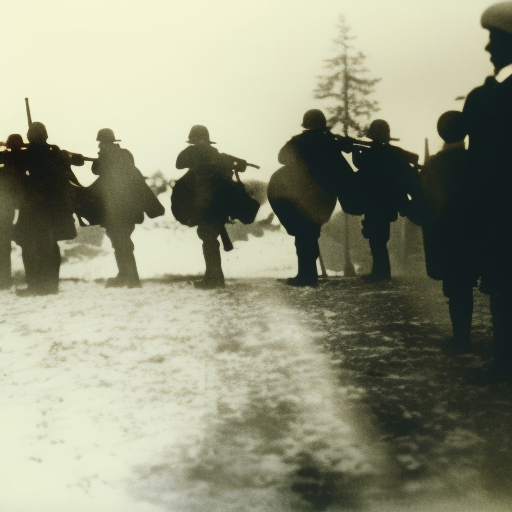Battle of Hohenlinden: A Decisive Victory for Napoleon
The Battle of Hohenlinden took place on December 3, 1800, during the War of the Second Coalition. It was a decisive victory for the French army, led by General Jean Victor Moreau, against the Austrian forces commanded by Archduke John of Austria. The battle occurred near the village of Hohenlinden, located in present-day Germany.
Background: The War of the Second Coalition was a conflict that arose after the French Revolution and the rise of Napoleon Bonaparte. The coalition, consisting of Austria, Russia, Britain, and other European powers, aimed to restore the Bourbon monarchy in France and halt the spread of revolutionary ideals. Napoleon, then First Consul of France, sought to expand French influence and consolidate his power.
French Strategy: In late 1800, Napoleon devised a plan to defeat the Austrians. He ordered General Moreau to lead the French Army of Rhine and Moselle across the Rhine River into Bavaria, while he himself would distract the Austrians by engaging them in Italy. The goal was to separate the Austrian forces and defeat them in detail.
The Battle: On December 3, Moreau’s army encountered the Austrians near Hohenlinden. The French forces, numbering around 60,000 men, faced an Austrian army of approximately 70,000 soldiers. Despite being outnumbered, Moreau’s troops displayed superior tactics and coordination.
The battle began with a series of skirmishes and artillery exchanges. The French, utilizing their light infantry and cavalry, launched a series of attacks to disrupt the Austrian lines. Moreau’s troops managed to outflank the Austrians, causing confusion and disarray among their ranks.
As the battle progressed, the French launched a decisive assault on the Austrian center. The Austrians, caught off guard and overwhelmed, were unable to mount a coordinated defense. Moreau’s troops pressed their advantage, routing the enemy and inflicting heavy casualties.
Outcome: The Battle of Hohenlinden resulted in a resounding victory for the French. The Austrians suffered significant losses, with around 10,000 soldiers killed, wounded, or captured. The French, on the other hand, lost approximately 3,000 men. The battle demonstrated the effectiveness of Napoleon’s military strategies and solidified his reputation as a brilliant tactician.
The victory at Hohenlinden had far-reaching consequences. It forced Austria to sue for peace, leading to the Treaty of Lunéville in 1801. This treaty reaffirmed French control over much of Italy and Germany, further expanding Napoleon’s influence in Europe. It also weakened the Second Coalition and set the stage for Napoleon’s rise to power as Emperor of the French.
Legacy: The Battle of Hohenlinden is considered one of Napoleon’s greatest victories. It showcased his ability to outmaneuver and defeat larger enemy forces. The battle also highlighted the effectiveness of the French army’s combined arms tactics, which combined infantry, cavalry, and artillery in a coordinated manner.
Furthermore, the battle demonstrated the importance of morale and discipline in warfare. The French soldiers, inspired by their charismatic leader and confident in their abilities, fought with great determination and cohesion. This contributed to their success on the battlefield.
In conclusion, the Battle of Hohenlinden was a pivotal moment in the Napoleonic Wars. It marked a significant victory for the French and solidified Napoleon’s position as a military genius. The battle’s outcome had profound implications for the balance of power in Europe and set the stage for further French expansion on the continent.












